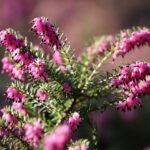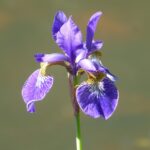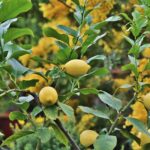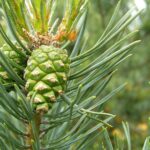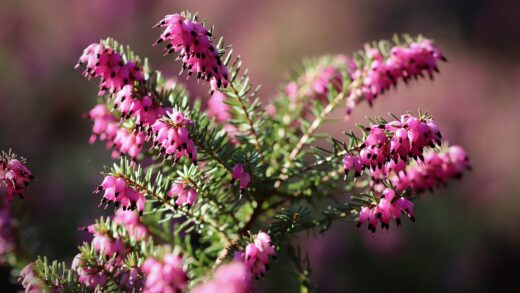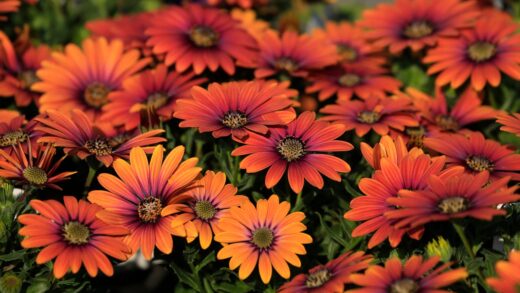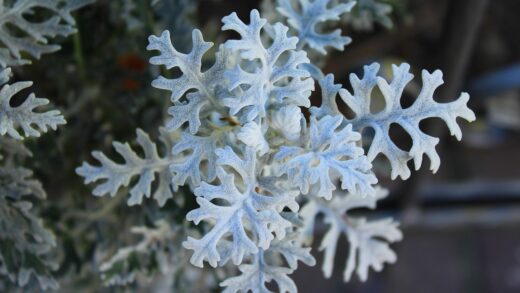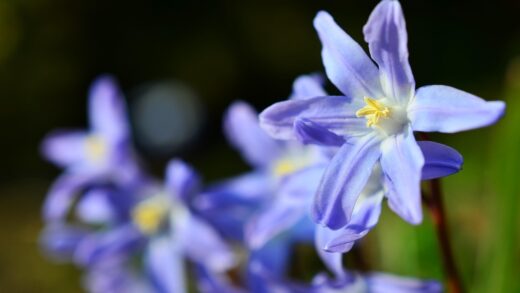Providing the appropriate nutrients through a well-considered fertilization regimen is a critical component of cultivating a vibrant and aromatic lemon-scented geranium. While these plants are not exceptionally heavy feeders, a consistent supply of essential minerals is necessary to support their lush foliage, fragrant leaves, and periodic flowering. Fertilization is not about force-feeding the plant; rather, it is about supplementing the nutrients available in the potting medium, which become depleted over time. A properly nourished plant will exhibit more vigorous growth, better color, and a heightened resistance to pests and diseases, making the effort of a regular feeding schedule well worthwhile.
Understanding the nutritional needs of your plant starts with recognizing that different nutrients play different roles. Nitrogen is vital for leaf and stem growth, phosphorus is crucial for root development and flowering, and potassium contributes to overall plant health and vigor. A balanced fertilizer provides these three macronutrients in appropriate proportions, along with a suite of essential micronutrients. The key is to supply these elements in a form the plant can readily absorb, and at a concentration that promotes healthy growth without causing chemical burn to the sensitive root system.
The timing and frequency of fertilization are just as important as the type of fertilizer used. The lemon-scented geranium should only be fed during its active growing season, which typically spans from spring through to late summer. Fertilizing during the plant’s winter dormancy period is unnecessary and can be harmful, as the plant is not actively taking up nutrients, and the unused fertilizer salts can accumulate to toxic levels in the soil. A disciplined approach, aligned with the plant’s natural growth cycle, will yield the best results.
Ultimately, the goal of fertilization is to maintain a steady, but not excessive, supply of nutrients. More is not better when it comes to feeding plants. Over-fertilization can be more damaging than under-fertilization, leading to burned roots, weak and spindly growth, and a buildup of salts in the soil. By adopting a balanced and measured approach, you can ensure your lemon-scented geranium receives the precise nutrition it needs to thrive and fill your space with its wonderful citrus scent.
Understanding essential nutrients
To effectively fertilize your lemon-scented geranium, it is beneficial to have a basic understanding of the key nutrients plants require. These are broadly categorized into macronutrients, needed in larger quantities, and micronutrients, which are essential but required in much smaller amounts. The three primary macronutrients, often displayed as an N-P-K ratio on fertilizer packaging, are Nitrogen (N), Phosphorus (P), and Potassium (K). Each plays a distinct and vital role in the plant’s life processes and overall health.
More articles on this topic
Nitrogen is arguably the most important nutrient for promoting lush, green foliage. It is a fundamental component of chlorophyll, the pigment that allows plants to photosynthesize and convert light into energy. A sufficient supply of nitrogen results in vigorous leaf and stem growth, giving the plant a full and healthy appearance. A nitrogen deficiency, on the other hand, typically manifests as yellowing of the older, lower leaves and stunted overall growth, as the plant moves this mobile nutrient to support its new growth.
Phosphorus is critical for energy transfer, root development, and the processes of flowering and fruiting. A strong, healthy root system, encouraged by adequate phosphorus, is the foundation of a resilient plant, enabling it to efficiently absorb water and other nutrients. It also plays a key role in the formation of flowers and seeds. While a phosphorus deficiency can be harder to diagnose, it often results in poor growth, a purplish tint to the leaves, and a reduced capacity for blooming.
Potassium contributes to the overall vigor and durability of the plant. It is essential for regulating water movement within the plant, activating enzymes, and strengthening cell walls. A good supply of potassium enhances the plant’s resistance to drought, temperature extremes, and diseases. The symptoms of a potassium deficiency often appear as yellowing or browning along the edges of the older leaves, as well as weak stems and a general lack of robustness. A balanced fertilizer will provide all three of these macronutrients to ensure comprehensive nutritional support.
Choosing the right type of fertilizer
When selecting a fertilizer for your lemon-scented geranium, you have several options, each with its own set of advantages. Liquid fertilizers are a popular choice for container-grown plants because they are fast-acting and provide precise control over the application. These are typically mixed with water according to the manufacturer’s instructions and applied during regular watering. A balanced liquid fertilizer, such as one with an N-P-K ratio of 10-10-10 or 20-20-20, diluted to half-strength, is an excellent choice for providing a consistent supply of nutrients throughout the growing season.
More articles on this topic
Slow-release granular fertilizers offer a more hands-off approach to feeding. These are coated pellets that you mix into the surface of the soil, typically at the beginning of the growing season. Each time you water, a small amount of the nutrients is released into the soil over an extended period, which can range from three to nine months depending on the product. This method is convenient and reduces the risk of over-fertilization, providing a steady, low-level feed that suits the moderate needs of the lemon-scented geranium well.
Organic fertilizers, such as fish emulsion, compost tea, or worm castings, are another superb option. These not only provide essential nutrients but also improve the soil structure and support the beneficial microbial life within the potting medium. While they may have a lower N-P-K ratio and release their nutrients more slowly as they are broken down by soil organisms, they contribute to the long-term health of the soil. Many gardeners prefer organic options for their gentle action and holistic benefits.
It is generally best to choose a balanced fertilizer for regular feeding to ensure the plant receives a complete range of nutrients. However, if your primary goal is to encourage more flowers, you might occasionally use a “bloom booster” formula that has a higher phosphorus content (the middle number in the N-P-K ratio). Conversely, if the plant’s foliage appears pale, a fertilizer with a slightly higher nitrogen content could be beneficial. However, for consistent health, a balanced approach remains the most reliable strategy.
The fertilization schedule
The timing of fertilizer application is critical and must be synchronized with the plant’s natural growth cycle. The lemon-scented geranium’s active growing period runs from early spring through late summer. This is the only time you should be applying fertilizer. Begin feeding in the spring as soon as you observe new growth emerging. This initial application will provide the necessary fuel for the plant to produce new stems and leaves after its winter rest.
During the peak growing season of spring and summer, a consistent fertilization schedule is key. If you are using a water-soluble liquid fertilizer, a common recommendation is to feed the plant every two to four weeks. Many experienced growers prefer a “weakly, weekly” approach, where they use the fertilizer at a quarter of the recommended strength but apply it with every watering. This method provides a very steady and gentle supply of nutrients that mimics natural conditions more closely and avoids the shock of infrequent, high-dose feedings.
As late summer transitions into autumn, you must begin to reduce and then cease fertilization altogether. This is a crucial step in helping the plant prepare for its winter dormancy. Continuing to feed into the autumn encourages the growth of new, tender foliage that is highly susceptible to damage from cooler temperatures and less likely to survive the winter. Gradually decrease the frequency of feeding in late summer and stop completely by early to mid-autumn.
No fertilizer should be given to the plant during its winter dormant period, which typically lasts from late autumn until the following spring. The plant’s metabolic processes have slowed down dramatically, and it is not actively taking up nutrients from the soil. Adding fertilizer at this time is not only wasteful but can be actively harmful. The unused fertilizer salts will accumulate in the soil, potentially burning the dormant roots and causing problems when growth resumes in the spring.
Application techniques and best practices
Proper application technique is essential to ensure the fertilizer benefits the plant and does not cause harm. One of the most important rules is to always water the plant thoroughly before applying a liquid fertilizer. Never apply fertilizer to dry soil. The roots of a dry plant are more susceptible to being burned by the concentration of fertilizer salts. Watering beforehand ensures the soil is moist and the fertilizer is distributed more evenly throughout the root zone.
When using a liquid fertilizer, be sure to dilute it correctly according to the product’s instructions, or even more diluted (half or quarter strength) to be on the safe side. Over-concentrated fertilizer is a common cause of plant damage. Apply the diluted solution directly to the soil at the base of the plant, avoiding contact with the leaves as much as possible. While some foliar feeding can be beneficial, direct soil application is the most efficient way to deliver nutrients to the roots.
If you opt for a slow-release granular fertilizer, distribute the granules evenly over the soil surface and then gently scratch them into the top centimeter or two of the potting mix. This helps to activate the coating and ensures the nutrients are released closer to the root zone. After applying the granules, water the plant thoroughly. This initial watering helps to settle the granules and begins the process of nutrient release.
It is important to observe your plant for signs of both under-fertilization and over-fertilization. Under-fed plants may show signs like yellowing leaves, slow growth, and a lack of flowering. Conversely, an over-fed plant might have burned-looking leaf edges, a white crust of salt on the soil surface, or sudden wilting. If you suspect you have over-fertilized, you can flush the soil by watering the plant heavily and allowing the water to drain through completely several times. This helps to leach the excess fertilizer salts from the potting medium.
Special nutritional considerations
While a balanced fertilizer is generally sufficient, there are some specific nutritional needs and considerations to keep in mind for the lemon-scented geranium. These plants can be susceptible to magnesium deficiency, which often manifests as yellowing between the veins of the older, lower leaves, a condition known as interveinal chlorosis. If you notice these symptoms, a simple and effective remedy is to supplement with Epsom salts (magnesium sulfate).
To treat a suspected magnesium deficiency, dissolve one teaspoon of Epsom salts in four liters of water. You can use this solution to water the plant in place of a regular watering. This should only be done occasionally, perhaps once or twice during the growing season, if symptoms appear. This provides a direct boost of magnesium and sulfur, another important micronutrient, which can quickly help to green up the foliage and improve the plant’s overall health.
It’s also worth noting that the pH of the soil can affect the plant’s ability to absorb nutrients. Lemon-scented geraniums prefer a slightly acidic to neutral soil pH, generally in the range of 6.0 to 7.0. Most commercial potting mixes fall within this range. If the soil becomes too alkaline or too acidic, certain nutrients can become ‘locked up’ and unavailable to the plant, even if they are present in the soil. Maintaining a healthy soil environment with good quality potting mix and regular, but not excessive, fertilization helps to keep the pH stable.
Finally, consider the plant’s life stage. A newly propagated cutting or a recently repotted plant does not need to be fertilized immediately. Wait until the cutting has established a good root system and is showing signs of active new growth, which can take several weeks. For a repotted plant, the fresh potting mix will contain an initial supply of nutrients, so you should wait at least four to six weeks before resuming your regular fertilization schedule. This allows the plant time to acclimate and prevents its tender new roots from being burned.









